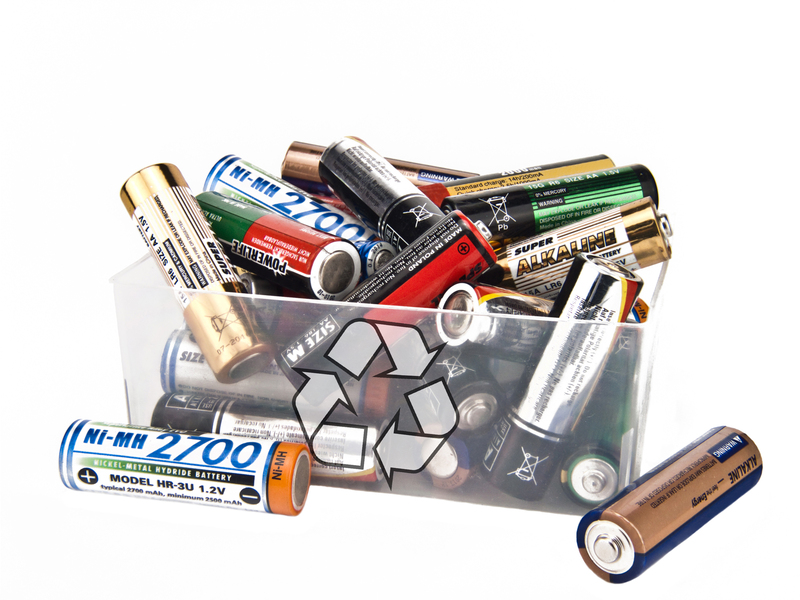Best Practices for Responsible PPE Waste Disposal
In recent years, the use of Personal Protective Equipment (PPE) has increased exponentially, especially due to global health emergencies. While PPE items like masks, gloves, face shields, and gowns are vital for safety, their improper disposal can have serious environmental and public health consequences. This comprehensive guide will explore the best practices for responsible PPE waste disposal so your facility, home, or community can manage PPE materials efficiently and sustainably.
Why PPE Waste Management Matters
PPE has become a daily requirement in healthcare, industry, public spaces, and even in households. However, these single-use items are often made of plastics which can persist in the environment for hundreds of years. Discarded PPE in natural ecosystems can harm wildlife, block waterways, and contribute to microplastic pollution. Furthermore, contaminated PPE can pose health risks to waste handlers and the public if not disposed of responsibly.
- Environmental Impact: Improper PPE waste disposal contributes to land and marine pollution.
- Health and Safety: Used PPE can carry pathogens, endangering sanitation workers and the general public.
- Legal and Regulatory Compliance: Many regions have fines and regulations regarding hazardous medical or infectious waste.
Understanding the best PPE disposal methods is essential for both environmental stewardship and legal compliance.

Types of PPE Waste
Before discussing best practices, it's crucial to classify the various types of PPE waste:
- Single-Use Masks: Surgical or disposable face masks that are thrown away after use.
- Gloves: Typically made from nitrile, latex, or vinyl; used in healthcare, food service, and other industries.
- Gowns and Coveralls: Often used in medical or laboratory settings.
- Face Shields and Goggles: Made from plastic materials, sometimes reusable, but often discarded for safety reasons.
- Respirators (N95 or similar): Used in hazardous settings; typically higher risk if contaminated.
Not all PPE is disposed of in the same manner. Proper classification helps determine the most responsible PPE waste management method.
Best Practices for Responsible PPE Waste Disposal
1. Segregate PPE Waste from Regular Trash
Always separate used PPE from household or office trash. Assign dedicated bins for PPE waste in noticeable and accessible areas. Clear segregation reduces the risk of contamination and streamlines proper disposal.
- Use labeled bins: Mark containers with "PPE Waste Only."
- Color codes: Many facilities use red or yellow bins to identify infectious or clinical waste.
2. Use Leak-Proof and Sealable Bags
PPE contaminated with bodily fluids or hazardous substances must be placed in strong, leak-proof bags or containers. This prevents potential leaks, spills, and exposure to handlers and the public.
- Double bagging: Consider double-bagging for extra protection, especially in medical settings.
- Seal properly: Secure bags tightly to prevent accidental opening.
3. Minimize Direct Handling
Never touch used PPE with bare hands. Use gloves or tools when transferring PPE waste to designated containers. Regularly disinfect bins and wash hands thoroughly after handling any waste materials.
4. Follow Local Regulations and Guidelines
PPE waste disposal rules vary by country and region. Stay updated on local guidelines for handling and disposing of PPE. Some areas require treating PPE waste as infectious or hazardous, while others offer specific collection programs for communities and businesses.
- Healthcare facilities: Must comply with additional statutory regulations for medical waste disposal.
- Businesses: Should consult municipal corporations or waste management partners about appropriate disposal protocols.
- Homes: Review local waste authority advisories for safe disposal of personal PPE.
5. Educate and Train Personnel
Employees and family members should be trained in PPE waste management protocols. Awareness can drastically minimize accidental exposure and enhance compliance with best practices.
- Display posters: Post reminders about PPE disposal procedures near bins.
- Conduct drills: Regularly update staff on new disposal methods and hygiene protocols.
6. Choose Responsible Treatment and Disposal Methods
The final stage of safe PPE waste disposal involves selecting the right method to neutralize risks:
- Incineration: High-temperature burning in specialized plants can destroy pathogens and reduce volume, but care must be taken to manage air emissions.
- Autoclaving: Uses steam sterilization to disinfect waste before further processing.
- Landfilling: Some PPE can go to sanitary landfills as long as it's not classified as hazardous or infectious; must be properly bagged/sealed.
- Recycling: Innovative recycling programs for certain plastics are emerging; check local recycling guidelines to see if any PPE can be diverted from waste streams.
7. Consider Reusability and Alternatives
Sustainable PPE management also means considering reusable options where safe and feasible. High-quality, washable masks or face shields can substantially reduce disposable PPE waste.
- Reusable cloth masks: Must be washed with hot water and soap after each use.
- Durable face shields: Disinfect regularly and inspect for damage.
Special Considerations for Different Environments
Healthcare Settings
Hospitals and clinics generate the most significant amounts of PPE waste. The following steps can help ensure responsible medical PPE waste disposal:
- Sharps and biohazard bins: Place items like needles or contaminated PPE in puncture-resistant, clearly labeled bins.
- On-site treatment: Use autoclaves or incinerators before storage or transport to off-site facilities.
Commercial and Industrial Facilities
Worksites in manufacturing, food processing, and other sectors must follow OSHA and EPA regulations for occupational safety. Appoint a waste management officer and maintain a log of PPE waste generated and its disposal methods for accountability.
Households and Public Spaces
For the average home or public space, a few key steps can make safe PPE disposal simple:
- Bag them up: Place used masks and gloves in a plastic bag before throwing in household trash.
- Keep out of recycling: Disposable PPE is generally not accepted in curbside recycling programs.
- Discourage littering: Educate the community about the dangers of leaving PPE in parks or on streets.
Addressing Environmental Concerns
The scale of PPE littering has prompted global concern. Here's how to further mitigate the environmental impact:
- Support PPE recycling innovation: Some organizations now recycle certain PPE plastics into construction materials or new products.
- Advocate for biodegradable options: Encourage manufacturers and governments to develop and prioritize eco-friendly PPE materials.
- Participate in cleanup drives: Join or support city initiatives to remove PPE litter from parks, beaches, and urban areas.
PPE Waste Disposal: What Not to Do
Avoid these common mistakes when getting rid of used PPE:
- Do not flush masks, gloves, or wipes down the toilet. This causes blockages and environmental harm.
- Do not mix PPE with recyclables. Contaminated PPE can endanger recycling workers and taint recyclables.
- Do not burn PPE at home. Burning plastic in open areas releases toxic chemicals.
- Never re-use single-use PPE. It loses effectiveness and becomes a health hazard.
Future of Sustainable PPE Waste Management
As society adapts to ongoing public health challenges, sustainable PPE waste solutions are gaining traction. Here are some promising trends:
- Eco-design: PPE manufacturers are exploring biodegradable and compostable materials.
- Take-back schemes: Retailers and organizations offer collection points for used PPE, especially masks.
- Waste-to-energy: Modern facilities convert PPE waste into electricity under controlled conditions.
Governments and environmental organizations are increasingly focused on standardizing responsible PPE waste disposal at all societal levels.

Summary: Key Steps for Safe and Responsible PPE Disposal
- Identify all PPE items that need disposal.
- Segregate and bag PPE waste immediately after use.
- Consult local guidelines and follow regulations strictly.
- Promote responsible behavior among staff, family, and community members.
- Support innovative, sustainable solutions for long-term PPE waste reduction.
Conclusion
Responsible PPE waste disposal is not just an individual duty, but a collective responsibility that protects people and the planet. By following these best practices for PPE waste management, you can help reduce health risks, keep your environment clean, and support regulatory compliance. As new materials and waste solutions develop, staying informed and adopting sustainable practices will remain vital in safeguarding our world for generations to come.
For more information on PPE waste collection in your area, consult your local waste management authority or environmental protection agency.